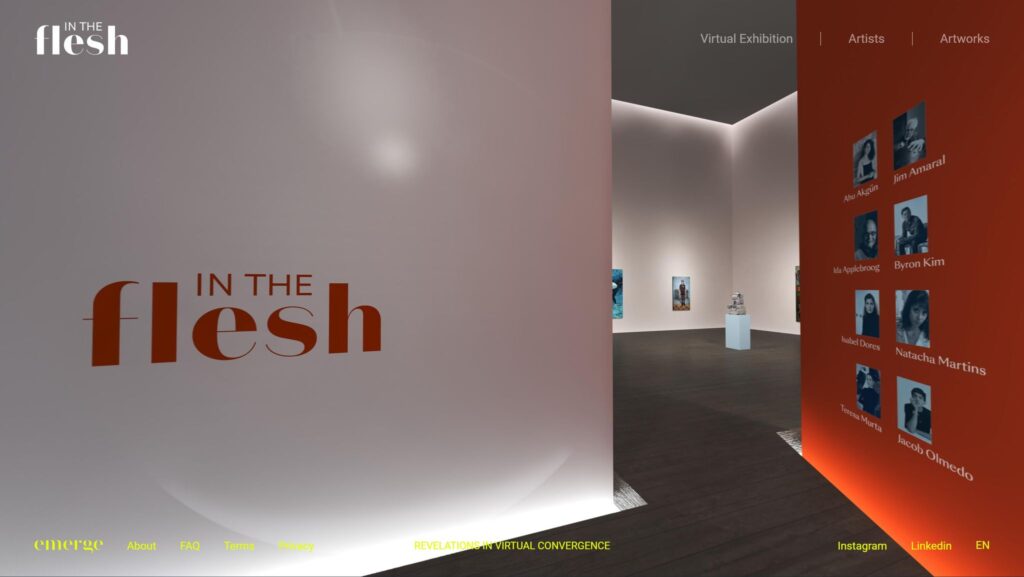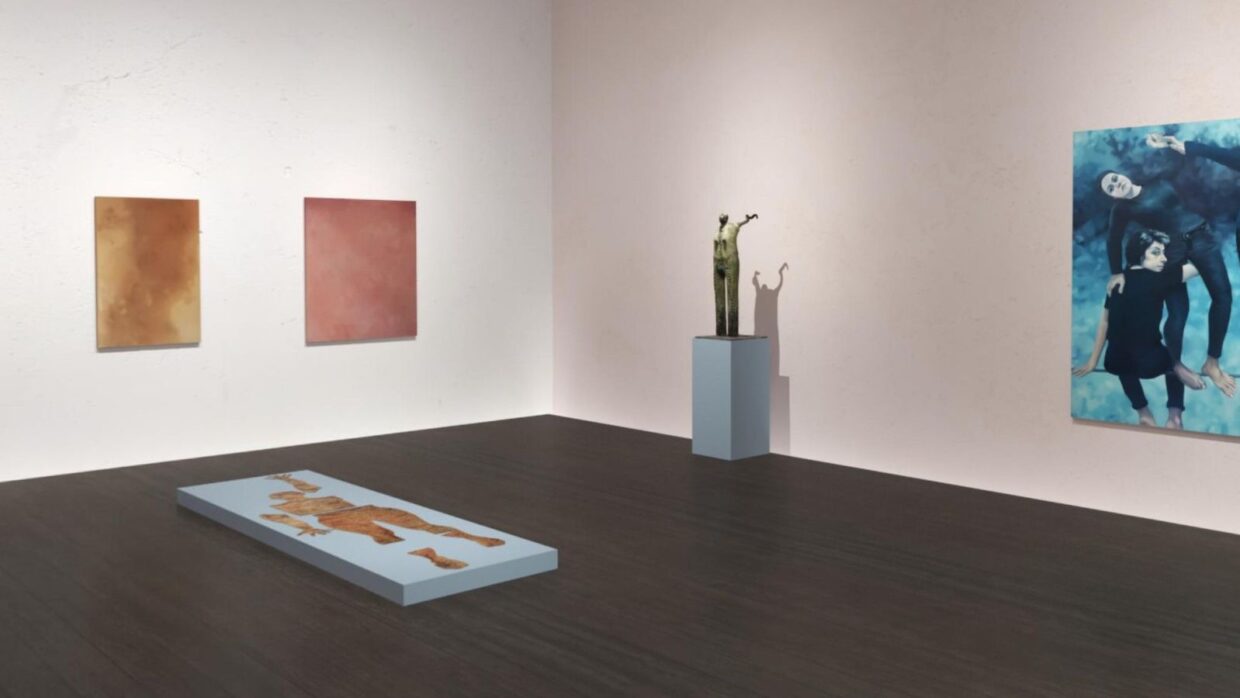Last week, Emerge | Converge, a new platform hosting an annual VR exhibition cycle, launched its latest exhibit, In the Flesh. Bringing together new work from emerging and established artists, In the Flesh explores how the human body is used to confront the senses of otherness, community, and identity in difficult times.
Twenty-four works are available for viewing and purchase on the platform, each accessible in a 360-degree view, including seven works by pioneering feminist artist Ida Applebroog, multiple paintings by Byron Kim and other artists who are represented in museums and private collections, including Natacha Martins, Jim Amaral, Teresa Murta, Ahu Akgün, Isabel Dores, and Jacob Olmedo.
We spoke with Lorena Duran, artistic director of Emerge | Converge, to learn more about the group’s mission, how they chose their themes, and the future of VR art going forward.
How do you determine ‘relevance’ in this case? Say more about the theme ‘In the Flesh.’ Why was this chosen? How did you determine that this was a ‘relevant’ exhibit?
The turmoil generated by the pandemic, when every aspect of our lives, relationships, and experience of the world through our bodies was challenged, was the seed of In the Flesh, which was conceived as a way to explore how we deal with and confront the vulnerability and resilience of our human nature at this point in time.
As the artistic director of the Emerge | Converge cycle, I proposed the theme and suggested artists whose work could serve as a guiding post for the overall vision. The theme was further developed in collaboration with Véronique Chagnon-Burke, an outstanding academic with a deep knowledge of the art world, who came to ground the concept with extensive research, preselecting nearly 100 international artists from which we progressively tailored the final selection.
In general, themes are chosen following an approach similar to trend forecasting, and are later enriched through collaboration with professional curators and art market experts, like Véronique.
Can you say a bit more about your interest in creating a space to collect and display art by iconic and emerging artists in the virtual world — what’s unique about your platform?
By breaking away from artificial silos generated by traditional art world dynamics, our platform allows us to offer a more expansive experience for collectors, artists, and viewers alike. Creating a space where both established and emerging artists converge opens a door to discover new influential international artists with ease, revisit known artists in a new light, and acquire culturally and financially valuable art, as vetted by professional curators and art market experts.
For artists, it offers a unique opportunity to engage in artistic exchanges beyond the environments they know, discover other artists across the world who work on relatable subjects, and enable exposure to new audiences.

How do you see the potential for immersive digital exhibits, NFTs, and Web3 tech impacting the cultural field moving forwards — whether in creation, commerce, or collaboration?
Immersive exhibitions will only continue to expand, specialize, and be leveraged by more sectors across the cultural landscape, because technology has reached a development point that enables broader access and expanded benefits.
Interactive displays have existed for decades and have well-defined markets and uses by institutions and large commercial enterprises, but might see further absorption by artists as training and collaboration opportunities expand.
A digital focus, rather than centricity, is inevitable and essential for any industry, and the art world is no exception. The future of the art world will not lie in purely digital initiatives, and I believe that only those which enable art world participants to engage in meaningful hybrid experiences that add actual value to their lives, will be the ones to pass the test of time.
Where and how do you see the potential for public involvement in Web3? How are you ‘onboarding’ people who are unfamiliar with VR to access your platform?
There is huge potential for public engagement in Web3 but for that to be realized we need to demystify the technologies involved in this space. AR, VR, AI, blockchain, and the legal, financial, and political structures that must underpin them still need to evolve significantly for non-Web3 enthusiasts to develop a lasting interest.
With regard to our platform, we strive to make user-centric decisions that enable people to engage in our collecting experience with minimal onboarding. We leverage familiar tools, visuals, and language to make people’s use of the platform as intuitive as possible, and offer them a simple visual guide to the key possible interactions within the virtual spaces before they enter.
We carefully plan the navigation within each exhibition to allow visitors to relate their movement within the virtual environments to that in physical space. In other words, we “onboard” people before they even visit our platform, and take the burden of preparation instead of placing it on the user.



